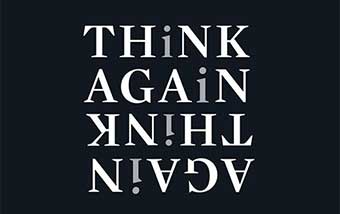Tyrant Lizard King
600 million years ago, in the Burgess Shale fossils of Canada, one can see dramatic changes happening in evolution. Life is exploding in form and diversity. Nature is experimenting wildly, with body shapes, body parts, eyes, and heads, fossils that look like Pixar animation. We aren’t sure why, but at that time, animals started eating other animals . . .alive. The dance of predator and prey, it seems, was creating an evolutionary storm.
It is one thing for life to learn to survive in the elements, to be able to find and digest food, reproduce and survive the weather. It is another to survive the attacks of other living beings, to outsmart other beings that are trying to outsmart you. A spiral of deceit and evasion and ferocity develops. Both predator and prey push each other to get bigger, and quicker, and meaner, and smarter . . . fast.
Forward 350 million years, as the great single-continent land mass, PANGEA, is splitting apart, causing a hell-fire holocaust of volcanic eruption called the Permian Extinction, predator and prey evolution culminates in the age of the dinosaurs.
“as the world was going to hell, dinosaurs were thriving, somehow taking advantage of the chaos around them” The Rise and Fall of Dinosaurs, Steve Brusatte.
Prey became bigger and more herd-like, utilizing defense in numbers and size, and more and more armored with horns and plates of skin. The Sauropods, like Argentinosauris – the largest animal ever on land on Earth – were four London buses long and five stories tall.
Predators became more and more cunning and vicious killing machines. Initially it was the crocodile, Archosauros, that ruled the killer world. Then came the Allosauros, the “butcher of the Jurassic”. Finally came the most ferocious hunter and killer of our planet’s history. . . Tyrannosaurus Rex.
Movie maker Steven Spielberg, did not have to exaggerate the evil, monstrous nature of Tyrannosaurus Rex.
T. Rex appears, almost exclusively in North America, 85 million years ago. He was 35-40 feet long, could weigh up to 7 tons, had teeth the size of bananas, 58 of them, the head the size of a car, and massive, bone crushing jaws capable of 3000 pounds of pressure, the strongest bite of any known animal on earth. His skull was built like an airplane fuselage, to withstand the forces of his bite. All his action was in his head. He didn’t chew. . .he ripped and crushed. He bit deeply and. . . pulled.
T. Rex hunted in packs. He had exceptional low frequency hearing. Like a seismometer, he would know, from far away, where you were. His camera eyes were the size of grapefruits. He had satanic horns for eyelashes. He was covered in scales and feathers like some freakish Mardi Gras nightmare.
T. Rex was the largest predator that has ever lived on land in the 4.5 billion years of life’s history on Earth. This meat lusting monster travelled in packs! He had bird’s lungs, and could breath in his bones. He could run 25 miles per hour. He was as smart as a chimpanzee. . the animal today that is thought to most closely rival human intelligence! He had very good smell. His only ‘weakness’ – he couldn’t turn well.
Empathy was not much in the T Rex brain. Young T. Rex may have wanted to get away from Momma T. Rex as soon as possible.
To this day, there is no fossil evidence of T. Rex eggs. . . .
Triceratops seems to have eventually been his main prey, a 40 ton gargantuan – the size of 5 elephants – with very thick scale and a giant, goring central unicorn horn. He was hard to bite without getting pierced.
T. Rex was just so good that his success was likely spelling his own doom, as he would eventually kill himself out of food. Before that, only God, it seems, could stop this Devil on Earth, and it seems God actually did.
Tyrannosaurus Rex and Triceratops were present on the Day of the Chicxulub asteroid impact 65 million years ago, the great inferno that brought to an end the Age of Dinosaurs, and T. Rex, and the spiraling horror show of predator and prey.
Birds are the only surviving dinosaurs today.
Nature it seems, for a long time was better at making killers than cooperators. Only small, nocturnal, rodent mammals, running under foot, at night, could co-exist in the Tyrannosaurus heyday, too small to bother with for T. Rex. Only after the asteroid impact could gentler predators, and greater cooperation. . .the age of mammals. . . flourish.
Eventually came Humans, as good at cooperation as T. Rex was at killing. They may be next to put themselves out of business. . . if God doesn’t.


